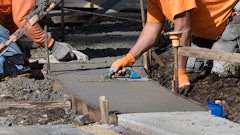The industry's reaction to decorative concrete has been a funny thing as it's grown in popularity the last few years.
A lot of people have embraced it as the creative medium it is. They recognize that it is raising the profile of concrete in construction and making people realize everything we can do with this wonderful material. At the same time, I've been stunned by the hostility that some people show toward decorative concrete.
I can't count the number of times I've been told that this is a passing fad. That people working with decorative concrete aren't real concrete contractors. That it's just a bunch of small companies doing small projects that don't really count as a major part of the industry. I've heard it from concrete contractors, general contractors, home builders, industry manufacturers and suppliers, and others.
What's driving this attitude? Some of it's fear, as many people are afraid of anything that's new and unproven. A lot of it is simple misinformation. Too many people hear decorative concrete and think of a small one-man operation building countertops or staining a floor. While small companies are an important part of the decorative market — and the industry as a whole, for that matter — many of the big players in the market have added decorative or architectural concrete divisions in the last few years.
The simple fact is that decorative concrete is here to stay. And the applications are only getting bigger. Take this month's cover project. Precision Concrete, a $30 million a year Alpharetta, Ga.-based company, installed 65,000 sq. ft. of integrally colored, exposed aggregate floors at the Five Points Center in downtown Atlanta. The company's 40-person architectural concrete division tackles five or six projects of that scale annually, along with smaller projects. The company told me that integrally colored, exposed aggregate floors are the fastest growing part of their business and are quickly becoming the finish of choice for many commercial projects. The company is also doing some astounding things with vertical architectural finishes on large commercial projects.
And Precision is just one of many companies taking on projects of this scale. From decorative finishes on tilt-up buildings to the explosion in popularity of polished concrete floors in warehouses and manufacturing facilities, the scale of decorative concrete projects is growing exponentially. Those companies that ignore it do it at their peril and may be in for a rude awakening when they realize that it's not going away.
Jonathan Sweet
Editor



















